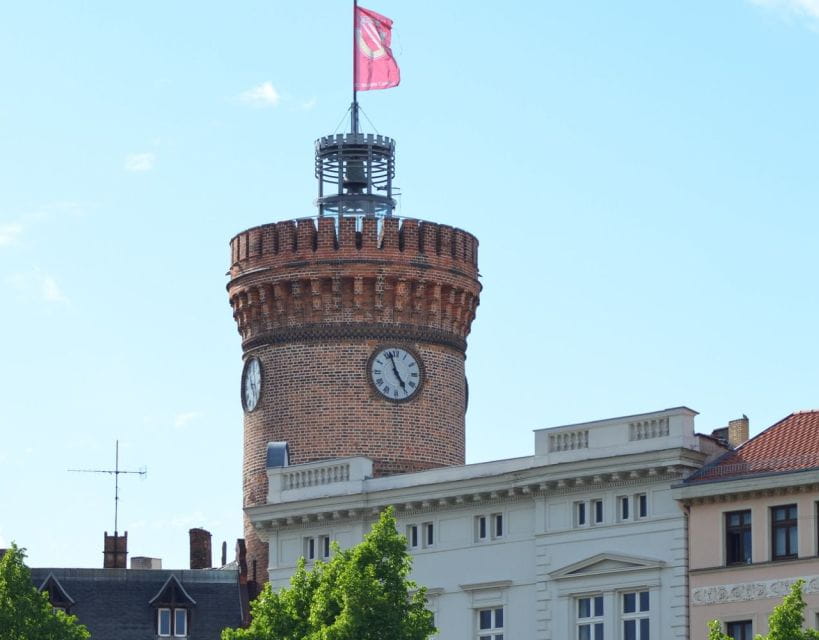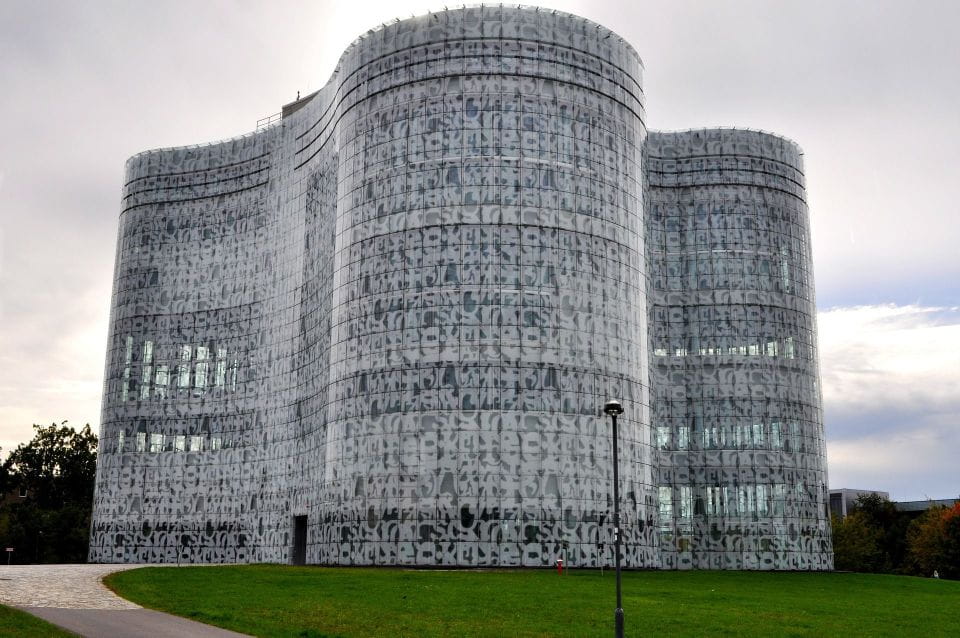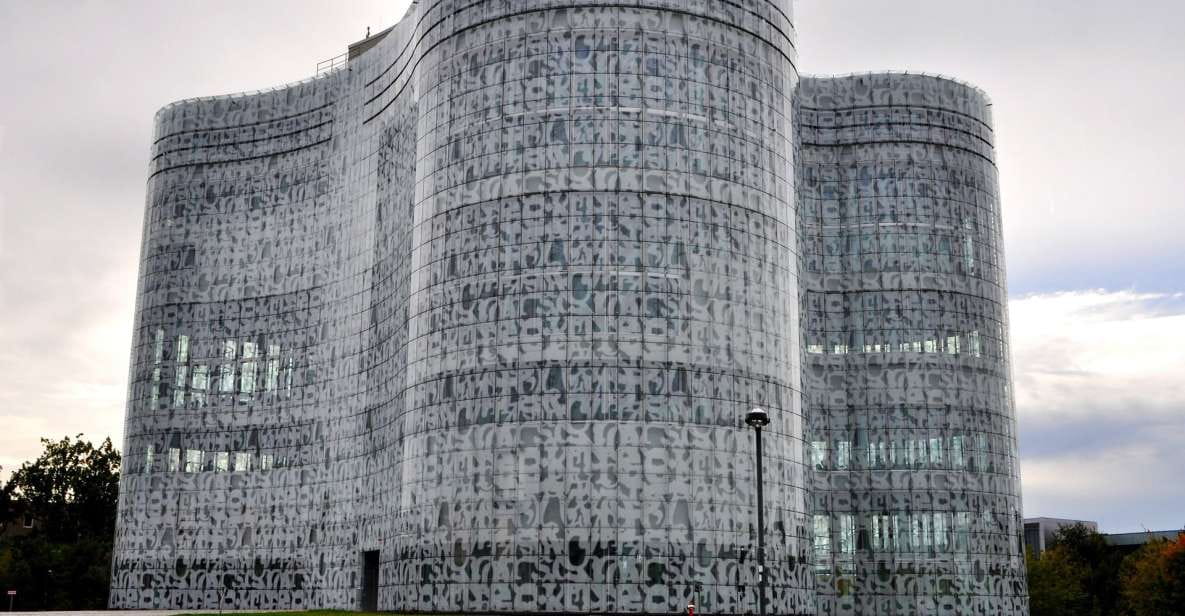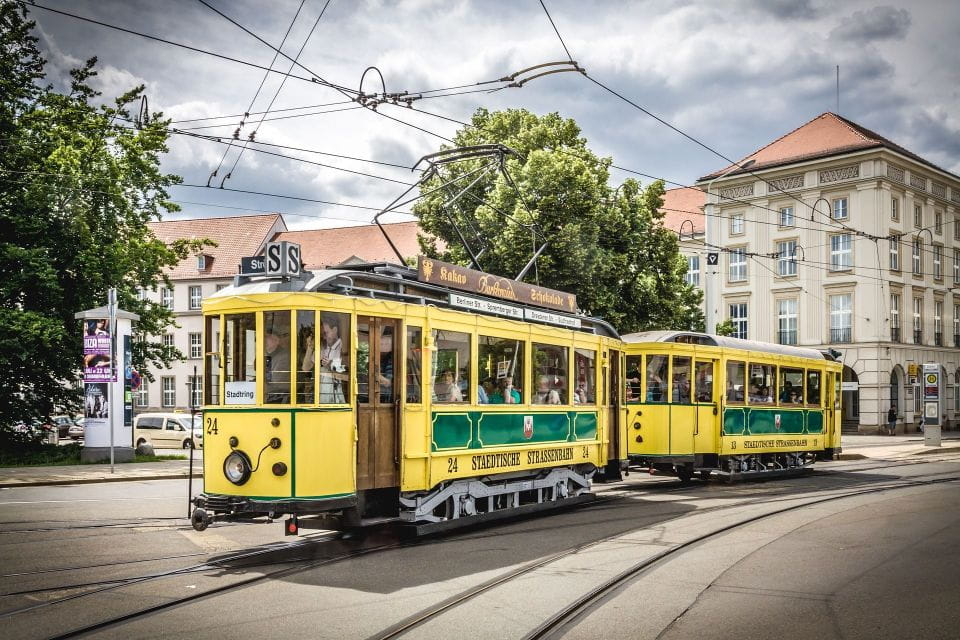Cottbus, a city steeped in Slavic history and cultural significance, beckons travelers to uncover its fascinating past. This private guided walking tour offers an immersive experience, delving into the origins of the city’s name, the story of the Sorbians, and the vital role of the postal coach driver. Participants will also explore the legacy of renowned landscape architect Prince Pückler and the impressive Olympic achievements of Cottbus athletes. With a customizable itinerary, this tour promises a comprehensive and engaging insight into the vibrant present and past of this unique German destination. Discover the enchanting layers that make Cottbus a must-visit for history enthusiasts and cultural explorers alike.
Key Points

- Explore Cottbus’ rich cultural heritage and Slavic roots through a guided walking tour highlighting the city’s naming origins and Sorbian history.
- Discover Cottbus’ transportation history by learning about the role of postal coach drivers in connecting the city to the outside world.
- Visit Branitz Park, a renowned green oasis designed by the pioneering landscape architect Prince Pückler, and learn about his innovative use of water features.
- Gain insights into Cottbus’ impressive Olympic legacy by visiting sites associated with the city’s successful athletes, including gold and silver medalists.
- Enjoy Cottbus’ vibrant present-day identity as a diverse and culturally rich destination through a personalized walking tour.
Origin and Spelling of the City’s Name

The origin of Cottbus‘ name is traced back to the Slavic word ‘Chośebuz,’ which refers to the location’s marshy conditions.
Over time, the name evolved, with the German spelling ‘Cottbus’ emerging in the 13th century.
The city’s name reflects its history as a Slavic settlement, where the Sorbian minority group has maintained a presence for centuries.
Exploring the origins and evolution of Cottbus’ name provides insights into the city’s rich cultural heritage and its development from a marshy outpost to a thriving urban center.
Understanding the linguistic roots of the city’s name is an integral part of the guided walking tour, offering visitors a deeper appreciation of Cottbus’ unique identity.
History of the Sorbians

Alongside the origins of Cottbus’ name, the walking tour examines the history and influence of the Sorbians, a Slavic minority group that has maintained a presence in the region for centuries.
The Sorbians have a rich cultural heritage, including their own language, traditions, and customs. Visitors will learn about the Sorbians’ struggles to preserve their identity in the face of German dominance, and how they’ve managed to keep their unique language and traditions alive to this day.
The tour may also touch on the Sorbians’ role in the history and development of Cottbus, and how their presence has shaped the city’s character and diversity.
Postal Coach Driver’s Story

As part of the walking tour, visitors will learn about the captivating story of the Postal Coach Driver, a figure whose role was integral to the city’s historical development and connectivity.
The Postal Coach Driver’s duties included:
- Transporting mail, packages, and passengers between Cottbus and other cities.
- Maintaining the horses and coaches used for the postal service.
- Navigating the often-treacherous roads and delivering messages promptly.
- Serving as a link between Cottbus and the outside world, facilitating trade, communication, and cultural exchange.
Through this fascinating glimpse into the past, tour-goers will gain a deeper appreciation for the vital role the Postal Coach Driver played in shaping Cottbus’ history.
Life of Prince Pückler

Prince Pückler, a prominent figure in Cottbus’ history, led an intriguing life as a pioneering landscape architect and adventurer.
He designed the city’s Branitz Park, which remains a beloved green oasis to this day.
Pückler’s passion for travel took him around the world, and he documented his experiences in a series of influential books.
As a garden designer, he’s known for his innovative use of water features and his ability to seamlessly integrate natural and man-made elements.
Visitors to Cottbus can still explore the tranquil landscapes he created, which offer a peaceful respite from the urban environment.
Pückler’s legacy continues to shape the city’s identity as a green and culturally vibrant destination.
Path of Glory and Olympic Medals
The walking tour also explores the ‘Path of Glory,’ highlighting the impressive Olympic achievements of Cottbus athletes over the years. As you stroll along this path, your guide will share the stories of the city’s top athletes and the medals they’ve won.
Some of the key highlights include:
- The gold medal won by Cottbus wrestler Alexander Leipold at the 2000 Sydney Olympics.
- The silver medal earned by hurdler Carolin Nytra at the 2012 London Olympics.
- The bronze medal secured by weightlifter Matthias Steiner at the 2008 Beijing Olympics.
The multiple medals won by Cottbus gymnasts, showcasing the city’s sporting excellence.
Customizing the Tour
One of the key benefits of this private guided walking tour is the ability to customize it with the local professional guide to align with your specific interests.
Whether you’re fascinated by the city’s medieval history, the Sorbians’ cultural heritage, or the athletic achievements of Cottbus’ residents, the guide can adapt the tour to suit your preferences. This flexibility ensures you’ll have an engaging and personalized experience, delving deeper into the aspects of Cottbus that most captivate you.
The guide can also recommend additional sights or activities based on your interests, helping you make the most of your time in this charming German city. With the option to customize, you’ll leave Cottbus with a unique and fulfilling understanding of its rich past and vibrant present.
Meeting Point and Directions
The meeting point for the private guided walking tour is located at Berliner Pl. 6, 03046 Cottbus. Visitors can easily find this central location, which serves as the starting point for the 1.5-hour exploration of Cottbus’ rich history and charming sights.
Getting to the meeting point is straightforward:
By public transport, take the bus or tram and get off at the ‘Berliner Platz’ stop.
By car, there’s limited street parking available near the meeting point.
For those walking, the meeting point is just a short stroll from the Old Town.
Arrive a few minutes early to meet your local guide and begin the captivating tour.
Tour Details
During the 1.5-hour private guided walking tour, visitors can expect to learn about the origin and spelling of Cottbus’ name, discover the history of the local Sorbians, and explore the life story of Prince Pückler.
The tour is offered in both English and German for private groups. Along the way, guests will walk the Path of Glory and learn about the Olympic medals won by Cottbus athletes.
While the tour follows a set itinerary, the guide is open to customizing aspects of the experience based on visitors’ interests.
The meeting point for the tour is Berliner Pl. 6, 03046 Cottbus, making it easy for participants to find the starting location.
Frequently Asked Questions
What Is the Best Time of Year to Visit Cottbus?
The best time to visit Cottbus is during the warmer months from May to September when the city’s lush green spaces and outdoor attractions are most enjoyable. Visitors can take advantage of the mild climate and explore Cottbus’ historic sights comfortably.
Are There Any Special Events or Festivals in Cottbus?
Cottbus hosts several annual festivals, including the Cottbuser Neiße Festival in June featuring music, art, and culture, and the Brandenburger Theaterfestival in October showcasing regional and national theater productions. Many events take place in the city’s historic market square.
What Are the Local Cuisine and Specialties in Cottbus?
Cottbus is known for its Sorbian cuisine, featuring dishes like Kluski (potato dumplings) and Błyski (sauerkraut pancakes). The region’s specialties also include tasty sausages and smoked meats. Visitors can sample local flavors at traditional restaurants throughout the city.
Are There Any Nearby Attractions Outside of Cottbus?
There are several nearby attractions outside Cottbus. Visitors can explore the Spreewald biosphere reserve, a unique wetland landscape with winding waterways. The picturesque town of Guben, just across the Polish border, also offers historic sights and outdoor recreation.
How Accessible Is the City for People With Disabilities?
Cottbus is generally accessible for people with disabilities. The city has wheelchair-friendly sidewalks, ramps, and public transportation. Tour providers can also accommodate needs upon request. However, some historic buildings may have limited accessibility due to their age and design.
Recap
The Cottbus private guided walking tour offers a captivating journey through the city’s rich Slavic heritage, renowned landscape architecture, and athletic achievements.
Uncover the fascinating origins of Cottbus’ name, explore the history of the Sorbians, and discover the vital role of the postal coach driver.
This comprehensive tour provides an engaging and insightful exploration of Cottbus’ vibrant past and present, leaving visitors with a deeper appreciation for this unique German city.
